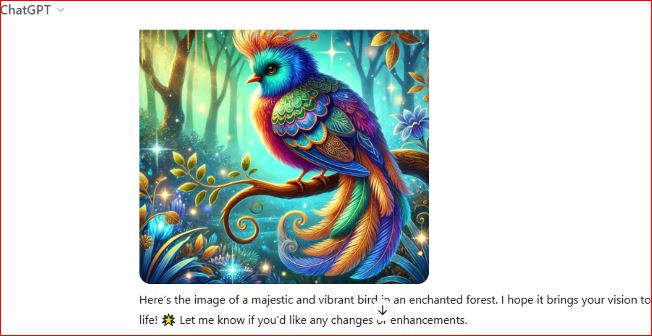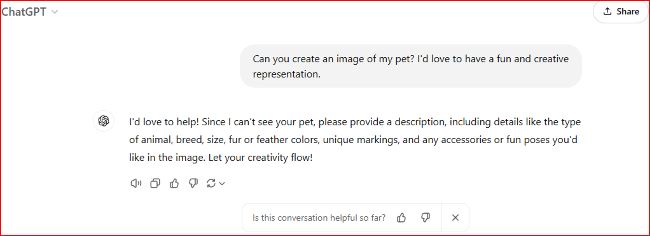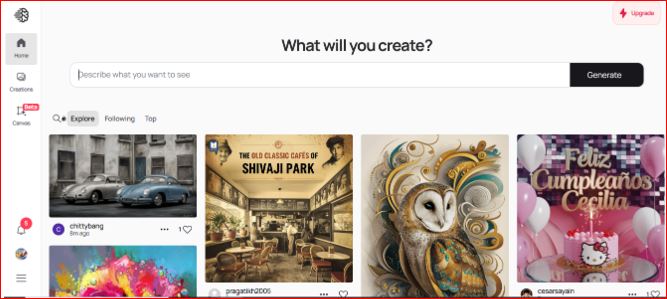Is AI Generated Content Enhancing Creativity or Replacing It
Published on 28.11.2024 by Chizoba T
One disruption that has happened in content creation and the social media industry is the introduction of AI tools. AI has transformed content creation from text to videos, images, and music. The tools are now so sophisticated that they can create content that cannot easily be distinguished from human-created content. With their ability to generate high volumes of content, they can help you grow your social media account.
However, one concern regarding AI is that the tool kills creativity. Since it is challenging the traditional content creation industry, it is raising serious questions about the ethics of these tools. In this article, we will look at the impact of AI-generated content on creativity.

Understanding AI-Generated Content
Unlike what many think, AI-generated content isn't only about written text. It also consists of other forms of content, such as images, videos, and audio, created using AI tools. The tools use natural language processing to create text and image content. Some of the most popular AI content-generation tools are:
- Generative Pre-trained Transformer (GPT). These tools effectively create text such as stories, articles, and codes.
- Midjourney and Dall-e. These AI tools are effective for creating images from texts.
- InVideo. This is a tool for creating videos from texts. These videos look like humans make them and can even help make money on social media.
- OpenAI MuseNet and Jukedeck. These tools can create audio tracks and music.
Applications of AI-Generated Content
There are different areas where AI content is being used, such as:
Media and Entertainment
Another area where AI content is being used is in the entertainment industry. AI is used to create music, scripts, and films. For instance, filmmakers can use AI-generated music to fit the mood of a scene in their videos. AI tools are also making it easier for media companies to generate summaries, articles, and reports quickly and accurately. For instance, AI can help create powerful ads for Instagram marketing.
Personalized Learning
AI also impacts education, as the technology helps tailor lessons to students' needs. For instance, teachers can use AI to create study guides, generate quizzes, and add interactive learning modules.
Customer Service
AI-powered virtual assistants and chat boxes now provide the same customer service as a human being. This has impacted customer service, making it easy for businesses to provide 24/7 support with high efficiency and personalization.
Content Creation, Marketing, and Advertising
As we have already seen, marketers use AI tools to generate a wide range of posts, such as ad copies, social media updates, blog posts, and product descriptions. With the right content marketing tools, companies can generate high volumes of content, personalize their communications, and respond quickly to marketing trends.

Art and Graphics Design
We have already seen AI image and video generation tools transforming graphic designs and art. Today, AI-generated images are being sold in galleries as unique pieces of art. The tools, therefore, open up new creative possibilities and enable the arts to try out different concepts and styles.
Is AI-Generated Content Killing Creativity?
We have already seen the different areas in which AI is impacting. So, the next question is about the place of professionals in these spaces. Is AI killing their creativity? According to one study by the University of Minnesota published in Management Science, the use of large language models (LLM) can increase the quality of an ad copy if used as a sounding board rather than an AI content creator.
When novices use LLM, the quality of the content increases. However, when experienced ad copy creators use LLMs, their creativity decreases. The study concluded that generative AI can increase the operation efficiency of performing specific tasks but does not increase the user's creativity. Therefore, AI tools aren't supposed to replace human creativity but should be powerful collaborators,
For instance, creating music from text depends greatly on the user’s vision and skills. If a novice uses AI tools, they will not achieve the same result as a music guru. The noise may not even create precise prompts. AI tools can be a powerful partner in brainstorming, helping overcome writer's block, and inspiring new angles for users.
When using AI, artists can generate new ideas, improve workflows, and push new boundaries with their creativity. AI can analyze large datasets, handle some repetitive tasks, and create initial drafts that would help artists refine their work and try out new creative directions.
The Future of AI-Generated Content
As AI-generated content evolves, it will likely be more integrated into the creative process. This may blur the line between human and machine-generated content. However, the AI content creation industry must deal with the technology's legal, ethical, and societal impact.
AI remains a great tool that can improve creativity and open up greater possibilities in expressions and communications. The most important is to balance what AI can do and get the most out of human creators.

Conclusion
AI-generated content is here, transforming industries and changing communication and creativity. While it has some clear benefits, it has its share of challenges and the need to answer ethical questions. Therefore, content creators should use the power of AI to address its key concerns. We are already experiencing the future of content creation, which is complex and exciting. You can read our guide on content marketing tips for brands.